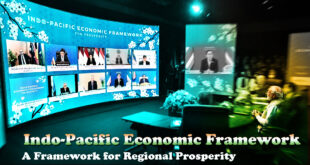Mired in Afghanistan, America’s retreat strategy mirrors its Vietnam war campaign
By the late 1960s, it became evident to American leaders that they could not win the Vietnam war. Richard Nixon, who was elected President in 1968, assigned Henry Kissinger, the National Security Adviser, to hold talks with the communist North Vietnam, seeking “peace with honour”. The Americans were actually prolonging a war they had already lost. The goal was not to defeat North Vietnam but to stop them from taking over the South, the American ally. Daniel Ellsberg, who leaked the Pentagon Papers, called this approach the “stalemate machine”. Cut to today’s Afghanistan. It’s hard to miss the similarities in the U.S.’s strategy. After 18 years of fighting — longer than America’s direct military involvement in Vietnam — the U.S. has realised that it cannot win the Afghan war. The American goal is no longer defeating the Taliban but to stop them, at least for now, from taking over Kabul. Veteran diplomat Zalmay Khalilzad is the new Kissinger. Just as Nixon wanted to get out of Vietnam, President Donald Trump too wants to get out of Afghanistan. In Vietnam, the U.S. was negotiating from a position of weakness. By the late 1960s, American public opinion had largely turned against the war. Despite massive troop deployment, both the U.S. and its South Vietnamese allies had failed to make substantial gains. America’s search and destroy operations in communist-dominated villages in the south and its disastrous air campaign in the north only fuelled Vietnamese hostility. The U.S. had dropped more than three times as many bombs on Vietnam as the Allied forces had during the Second World War. Besides, the South Vietnamese regime was unpopular, oppressive and weak. In a visit to Saigon, the South’s capital, a few months after he assumed the presidency, Nixon promised peace and asked the communists to reciprocate. He badly wanted a deal, and Mr. Kissinger was his bet. Nixon first started “Vietnamising” the war — reducing U.S. troop presence in Vietnam and shifting the focus from direct participation in land war to training and advisory roles, while continuing with air strikes. At the same time, Mr. Kissinger started talks with Le Duc Tho, a North Vietnamese revolutionary and diplomat. When talks were deadlocked, the U.S. offered to pull out of the South as a compromise. In 1973, the U.S., North Vietnam and representatives of South Vietnam and Viet Cong, the communist guerillas from the South, signed the Paris Peace Accords. The North and the South agreed to a ceasefire and continue holding peace talks, while the U.S. agreed to pull troops out of Vietnam. In the case of Afghanistan as well, the U.S. is negotiating from a position of weakness. The war entered a stalemate long ago. America’s allies stand divided. The government in Kabul, which the U.S. backs, is known for infighting and chronic corruption. The security forces are struggling to ensure basic security to the public, even in the capital city. Like Nixon’s “Vietnamisation”, U.S. President Barack Obama had started “Afghanising” the war — pulling out most troops and moving the remainder to training and advisory roles. The Afghan war is also unpopular in America. Mr. Trump, who campaigned to wind down America’s foreign interventions, wants to end it. But the U.S. cannot unilaterally pull out, especially when the Taliban is on the offensive. That would cause a lasting stain on America’s already battered reputation as the world’s pre-eminent military power. Hence, it needs a deal; finding one is Ambassador Khalilzad’s mission. U.S. officials have hoped that a deal could be reached by September 1. It is anybody’s guess what will happen to the Afghan government once America is out. When the U.S. was forced to pull out of Vietnam, the Southern and Northern governments hadn’t reached any settlement but for the ceasefire. The plan was for talks to continue, seeking a final agreement. The ceasefire did not last long. In the two years after the U.S. pulled out, the communists captured Saigon and the government crumbled like a house of cards. In the case of Afghanistan, there is not even a ceasefire between the government and the Taliban even as the U.S. is preparing to make an exit. The winning side is the Taliban, which, unlike the Viet Cong, is a anti-modern, anti-woman, anti-minority fundamentalist machine, whose earlier regime was notorious for excessive sectarian violence. The Taliban is part of the problem, not a solution. The Communists unified Vietnam, and after early years of struggle, modernised the economy and rebuilt the country into an Asian powerhouse. For Afghanistan, the tunnel gets longer and darker.
Check Also
The Kunming-Montreal Global Biodiversity Framework
Introduction The Kunming-Montreal Global Biodiversity Framework (KMGBF) is a landmark international agreement aimed at addressing …
 Chinmaya IAS Academy – Current Affairs Chinmaya IAS Academy – Current Affairs
Chinmaya IAS Academy – Current Affairs Chinmaya IAS Academy – Current Affairs



